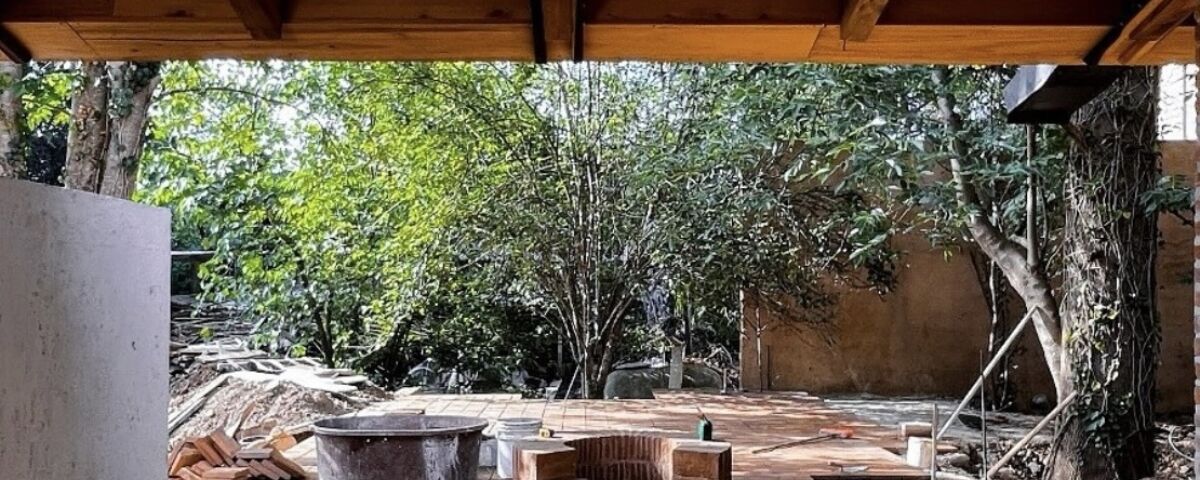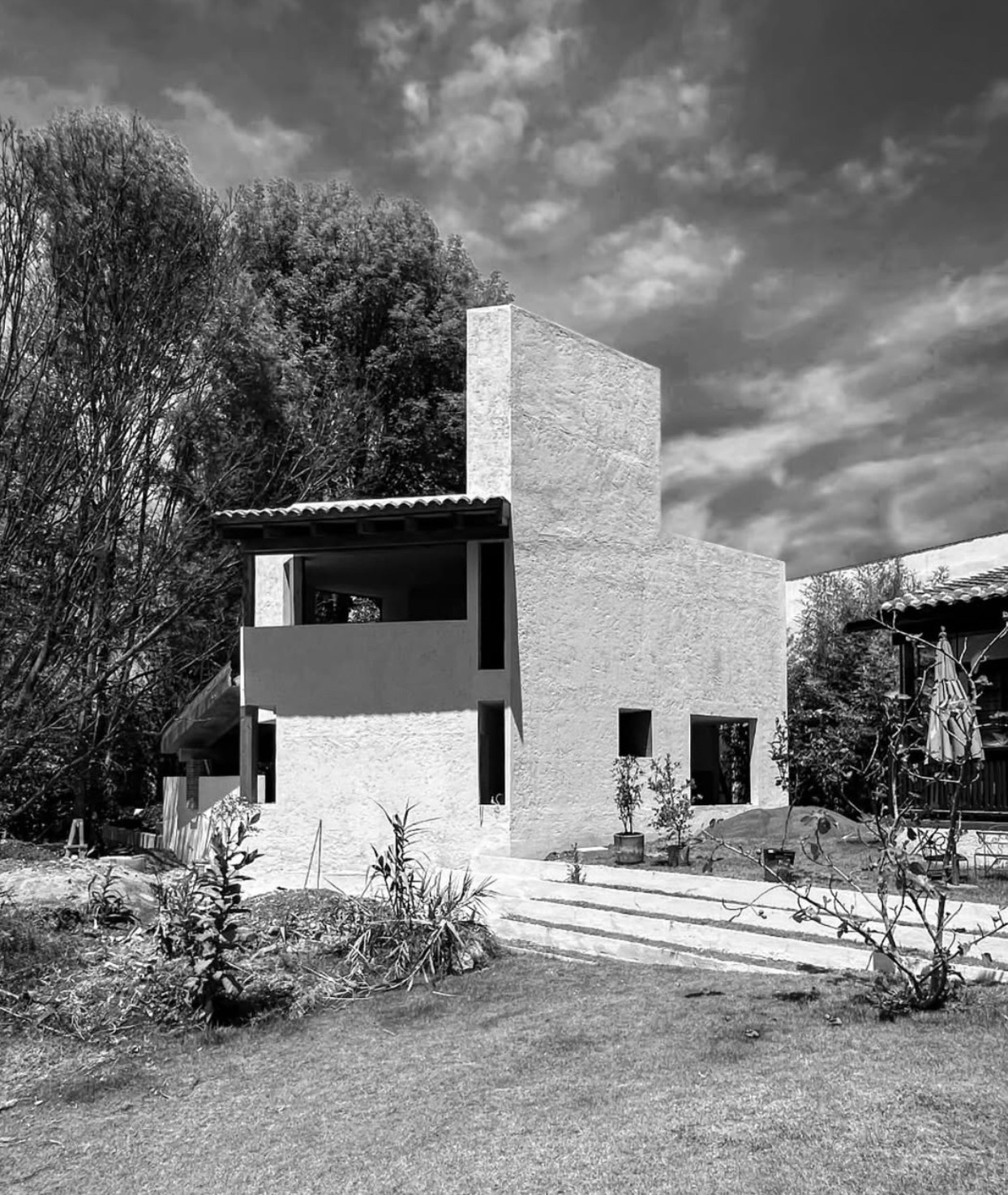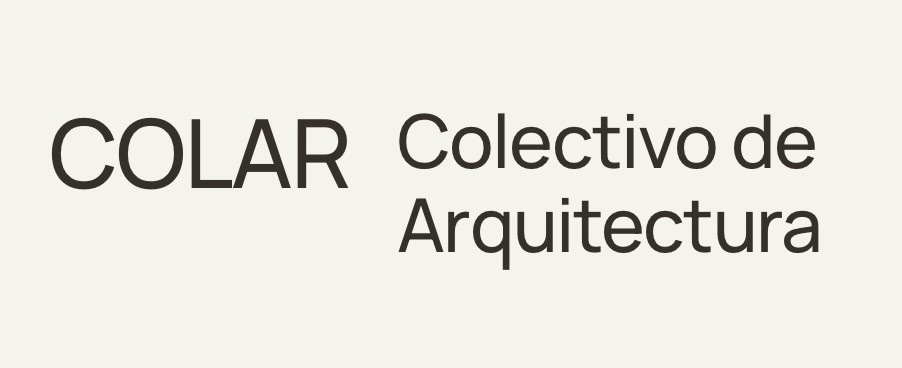




Keep this story going! Share below!
COLAR is transforming traditional architecture through a collaborative and inclusive approach that values local resources and community participation. By designing context-sensitive spaces using regional materials and fair labor practices, the firm promotes sustainability, dignity, and accessibility in construction. This innovation directly supports the UN Global Goals for Decent Work (SDG 8), Sustainable Cities (SDG 11), and Responsible Consumption (SDG 12).
COLAR – Colectivo Libre de Arquitectura – redefines the way architecture is practiced in Mexico by creating a collaborative platform that connects architects, designers, engineers, and builders across the country. Founded in Tulancingo, Hidalgo, during the years following the COVID-19 pandemic, the collective emerged from the idea that meaningful architecture does not require a traditional office or centralized studio. Instead, COLAR uses digital collaboration and local partnerships to design spaces that are inclusive, sustainable, and deeply rooted in their social and cultural contexts.
This innovation stands out for its integration of local value chains and commitment to social responsibility. By sourcing materials and labor directly from regional suppliers—brickmakers, carpenters, and metalworkers—COLAR minimizes transportation costs and environmental impact while strengthening the local economy. Their projects prioritize human well-being and dignity through thoughtful design, ensuring that buildings provide comfort, accessibility, and emotional balance to their users.
Moreover, COLAR addresses several UN Sustainable Development Goals through its holistic model. The firm’s focus on inclusive and accessible architecture contributes to reducing inequalities (SDG 10), while its efforts to stimulate local economies support Decent Work and Economic Growth (SDG 8). Its environmentally conscious practices—such as using passive design strategies, optimizing natural light and ventilation, and reducing waste—advance Responsible Consumption and Production (SDG 12). Ultimately, COLAR’s innovation lies in proving that good architecture can be local, inclusive, and transformative, creating spaces that truly serve people and their communities.

The inspiration behind COLAR came from a moment of reflection during the COVID-19 pandemic, when traditional ideas of work, design, and space were suddenly challenged. Architect Maximiliano Animas Rueda, co-founder of the collective, realized that meaningful architecture did not depend on a physical studio but on shared purpose and collaboration. “We understood that we didn’t need a single office in Mexico City to create the architecture we believe in. We could take advantage of new tools and connectivity to work responsibly and collectively from anywhere,” he explained.
Returning to his hometown of Tulancingo, Hidalgo, Maximiliano was motivated by the contrast between the rigorous design culture he experienced in Mexico City and the more informal construction practices common in smaller towns. He saw an opportunity to bring ethical, accessible, and context-aware design to a region often overlooked by the architectural mainstream. “People invest their life savings in building something, but many times, due to lack of information or poor guidance, those resources are wasted. Our duty as architects is to make sure their investment becomes something dignified and functional,” he said.
For Maximiliano, the heart of COLAR lies in human connection — between designers, builders, and users. “Architecture shouldn’t be a luxury; it should improve everyone’s quality of life,” he reflected. His inspiration is not only to build structures but to build belonging, fostering pride, comfort, and care for the places people inhabit.
Since its creation, COLAR has had a tangible social, economic, and environmental impact in Tulancingo, Hidalgo, and surrounding regions. In the short term, the firm has strengthened local economies by employing regional labor and sourcing materials directly from nearby producers, such as brickmakers, carpenters, and metalworkers. This not only reduces transportation costs and carbon emissions but also ensures that the financial benefits of each project stay within the community. As Maximiliano Animas explains, “Using what’s around us makes sense — it’s sustainable, it’s economical, and it gives identity to the space.”
COLAR’s projects also have a measurable human impact. Through well-planned, well-lit, and accessible spaces, the firm enhances the quality of life and emotional well-being of users. Residents and clients report feeling more comfortable and proud of their environments, showing how thoughtful design can foster community belonging and care. In addition, COLAR’s commitment to dignifying construction work—by ensuring fair wages, safe conditions, and mutual respect—creates long-term social value within the industry.
In the long run, COLAR’s presence in Tulancingo is helping to shift local standards for architecture and urban development. The firm’s advocacy for accessibility, sustainability, and ethical construction is inspiring other professionals and authorities to adopt better practices. This ripple effect demonstrates that small-scale, locally driven innovation can influence entire ecosystems—building not only structures but a culture of responsibility, collaboration, and pride.
Because COLAR was founded on collaboration and local engagement, the collective has achieved steady growth and financial stability while maintaining its ethical principles. By sourcing materials and labor from the region, the firm has reduced production and logistics costs, allowing it to deliver higher-quality projects with limited budgets. This strategy has also increased trust among clients, who value COLAR’s transparency and community-centered approach. As a result, most new projects come through referrals and long-term partnerships, ensuring consistent demand and a strong local reputation.
The collaborative structure has also opened new opportunities for remote and multidisciplinary work. Since its creation, COLAR has expanded its network of professionals across different Mexican states, enabling it to take on diverse projects without relying on a centralized office. This model reduces overhead expenses and enhances creativity, as each project benefits from multiple perspectives and skill sets. “We’re not just an architecture firm — we’re a living network of people who share the same vision,” Maximiliano Animas explained.
Internally, COLAR’s inclusive work culture has fostered high employee satisfaction and retention. Team members feel valued and empowered to contribute ideas, leading to a healthier, more dynamic workplace. In the long term, this innovation is positioning COLAR to enter larger public and cultural projects, attracting both local and external investors interested in sustainable and socially driven architecture.
COLAR’s innovation directly benefits society by redefining how architecture interacts with communities. By prioritizing local labor and suppliers, the firm has strengthened the economic fabric of Tulancingo and neighboring areas, ensuring that construction projects generate income and skill development for local families. The practice of hiring regional artisans — brickmakers, carpenters, and metalworkers — helps preserve traditional crafts while promoting economic inclusion and reducing dependency on large external distributors. This model has created a ripple effect, inspiring others to value craftsmanship, fair pay, and community collaboration as essential components of sustainable design.
Environmentally, COLAR’s approach focuses on minimizing the carbon footprint of each project. The firm achieves this by reducing material transportation, employing passive design strategies for natural lighting and ventilation, and optimizing energy efficiency throughout the building’s lifecycle. Maximiliano Animas explains, “A well-oriented and ventilated building doesn’t need to depend on air conditioning or artificial lighting; good design itself becomes an environmental solution.” Through this mindset, COLAR proves that sustainability doesn’t require high-end technology — just awareness, creativity, and respect for context.
Get stories of positive business innovations from around the world delivered right to your inbox.

COLAR (Colectivo Libre de Arquitectura) is a collaborative architectural studio based in Tulancingo, Hidalgo, Mexico. The firm brings together architects, designers, and construction professionals from across the country to develop projects that are socially responsible, context-driven, and environmentally conscious. By emphasizing teamwork, local craftsmanship, and inclusive design, COLAR seeks to create spaces that foster community, identity, and sustainable urban growth.